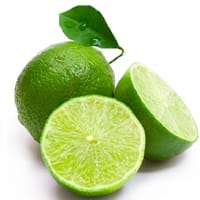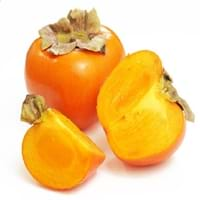Health Benefits
Arthritis treatment, Cholera treatment, Gout treatment, Heart care, Piles treatment, Scurvy treatment
Anti-oxidant properties, Beneficial in curing fever, Cancer prevention, Heart care, Reduces nervous tension
General Benefits
Cures fever, Digestive aid, Eye care, Maintains healthy cholesterol level, Treatment of common cold
Anti-inflammatory properties, Boosts immune system, Controls blood pressure, Digestive aid, Eye care, Fights against infections, Helps in weight loss, Improves blood circulation
Skin Benefits
Anti-aging benefits, Skin rejuvenation, Treatment of acne, Treatment of dark spots
Anti-aging benefits, Brightens and lightens complexion, Reduces wrinkles
Hair Benefits
Promotes longer and healthier hair, Treatment of dandruff
Good conditioner, Promotes longer and healthier hair, Treatment of dandruff
Allergy Symptoms
Breathing difficulty, Coughing, Eye irritation, Hives, Inflammation, Nasal congestion, Runny nose, Skin rash, Wheezing
Abdominal pains, Anaphylaxis, Inflammation
Side Effects
Chances of sunburn
Affects blood glucose levels, Decrease in blood sugar levels, Coagulation
Best Time to Eat
Along with meal, Best to drink warm water with lime on an empty stomach, Don't consume at night and before bed
Along with meal, As a snack in the late afternoon, Don't consume at night and before bed, Eat the fresh ones, avoid mixing with any other foods, don't eat after meal.
Vitamin A (Retinol)
Not Available
Vitamin B1 (Thiamin)
Not Available
Vitamin B2 (Riboflavin)
Not Available
Vitamin B3 (Niacin)
Not Available
Vitamin B5 (Pantothenic Acid)
Not Available
Vitamin B6 (Pyridoxin)
Not Available
Vitamin B9 (Folic acid)
Not Available
Vitamin C (Ascorbic Acid)
Vitamin E (Tocopherole)
Not Available
Vitamin K (Phyllochinone)
Not Available
Lutein+Zeaxanthin
Not Available
Calories in Fresh Fruit with Peel
Not Available
Calories in Fresh Fruit without Peel
Not Available
Calories in Frozen Form
Not Available
Not Available
Calories in Dried Form
Not Available
Calories in Canned Form
Not Available
Type
Citrus, Tree fruit
Berry, Tree fruit
Season
All seasons
Autumn, Winter
Varieties
Key lime, Persian lime, Kaffir lime, Desert lime, Palestine Sweet Lime, Mexican Sweet Lime, Mary Ellen Sweet Lime
Early Golden, John Rick, Miller, Woolbright and Ennis
Color
Green
Orange, Red, Yellow
Inside Color
Light Green
Yellow
Origin
India
Eastern United States
Soil Type
Clay loam, Sandy loam
Sandy loam, Well-drained
Climatic Conditions
Sunny, Warm to hot climate
Can tolerate wide range of climates, Sunny
Facts about
- Lime is the called as the powerhouse of flavors.
- Fresh lime juice is so acidic that it can dissolve concrete.
- Limes are more fragrant and acidic than lemons.
- Persian limes are almost seedless and thorn less.
- It is said that formation of seeds inside the persimmon fruit shows what type of winter is coming(type of snow).
- There are about 2000 varieties of this fruit.
- The American persimmon has another name 'Possumwood'.
Other Countries
Argentina, Brazil, India, Mexico
Azerbaijan, Brazil, Costa Rica, Japan, Korea, Pakistan
Top Importer
United States of America
United States of America
Top Exporter
Mexico
United States of America
Botanical Name
Citrus aurantifolia
Diospyros virginiana
Synonym
not available
Not Available
Subkingdom
Tracheobionta
Tracheobionta
Division
Magnoliophyta
Magnoliophyta
Class
Magnoliopsida
Magnoliopsida
Subclass
Rosidae
Dillenhidae
Order
Sapindales
Ericales
Family
Rutaceae
Ebenaceae
Species
C. aurantifolia
D. virginiana
Generic Group
Citrus fruit
Not Available
Difference Between Lime and American Persimmon
We might think that Lime and American Persimmon are similar with respect to nutritional value and health benefits. But the nutrient content of both fruits is different. Lime and American Persimmon Facts such as their taste, shape, color, and size are also distinct. The difference between Lime and American Persimmon is explained here.
The amount of calories in 100 gm of fresh Lime and American Persimmon with peel is Not Available and 127.00 kcal and the amount of calories without peel is 30.00 kcal and Not Available respectively. Thus, Lime and American Persimmon belong to Low Calorie Fruits and High Calorie Fruits category.These fruits might or might not differ with respect to their scientific classification. The order of Lime and American Persimmon is Sapindales and Ericales respectively. Lime belongs to Rutaceae family and American Persimmon belongs to Ebenaceae family. Lime belongs to Citrus genus of C. aurantifolia species and American Persimmon belongs to Diospyros genus of D. virginiana species. Beings plants, both fruits belong to Plantae Kingdom.









